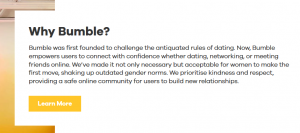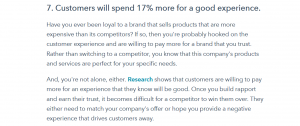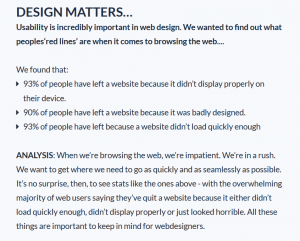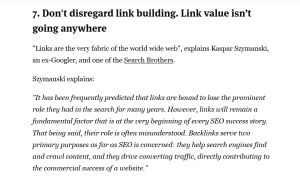The most successful websites are the ones that retain their brand identity and still adapt to market fluctuations. Customer preferences change, and so do search engine algorithms, which simply means that no website can be a stagnant creature. What used to be acceptable for a website ten years ago would likely not hold up to scrutiny today.
Relevance in terms of content, design, as well as customer experience, dictates if your website will impress your visitors. Not to mention convert them into buyers, or better yet, loyal brand followers. Utilizing your website in such a seamless, effective way shows just how agile your business truly is.
Recognizing the latest trends and what constitutes an appealing web presence is vital for creating a stellar website. However, for those trends to take effect and not disrupt your brand’s voice and authority, you need a strong foundation.
Here, we’ll tackle a few website essentials that each business should add to their strategy. They’ll serve as that much-needed foundation for your online presence, and allow you to establish yourself as a trustworthy entity for your target market.
1. There can be no site without a brand.
In all fairness, sure, you can build an app or website with no identity behind it. Will it attract loyal customers beyond a browse and maybe a test purchase? Unlikely.
For any website to stand out or build a devoted customer base, you first need to build a brand. Once you can say that you have a brand identity that embodies your values and purpose, your website can reflect that identity. Everything from the font you choose, the photos you take, all the way to the theme and layout you choose – your website will become an extension of your brand.

Source: bumble.com
Just look at Bumble, a dating and social app that took branding to a whole new level of amazing. They empower women to make the first move, and, since their inception, they’ve moved into business networking, as well.
When you have a clear value proposition and know what makes you different from your competitors, you can leverage that difference on your website.
2. User experience as your main objective.
Many business owners only take their own views into account when designing their website. Be it an e-commerce store or a subscription-based site, you should always focus on the other side of the story: your customers.
After all, you’re looking to inspire them to come to your website and trust you with their time, money, and references. If you need further incentive, research shows that customers are willing to spend 17% more on a positive experience when interacting with a business online.

Source: blog.hubspot.com
Simply put, it pays to know what the customer wants, and implement that in your website-building process. If your audience likes no-clutter websites, let them have a smooth, sleek visit. Ensure that they can easily navigate your entire site and that you have clear CTAs sprinkled all over to inspire engagement. However, always put your visitors first and pay attention to online privacy so that your customers can feel secure.
A little can truly go a long way when it comes to designing a site that treats customer experience as the main objective. Online chatbot integration on your website makes it conversational and increases its CRO.
3. Rely on trusted digital tools.
Now that you have your market research and your powerful brand identity, it’s time to bring them to life on your website. How? With the help of different digital tools to simplify the process and allow you to customize your online experience.
Depending on your needs, you can learn about different website builders to find the simplest, most flexible solution for you. Ideally, you should turn to reputable reviews before you make up your mind. Some of the most frequently used platforms for service-based sites include Wix and WordPress, while e-commerce businesses often choose Shopify or BigCommerce.
Make sure that you opt for a website builder that is not just easy to use in the design process, but one that lets you manage and maintain your website seamlessly. Look through the latest themes that boast advanced features and sleek, modern design, to reflect your own brand relevance.
4. Follow essential design principles.
While we’re on the subject of design, the main principle you should focus on is usability. Creating a user-friendly website means that you also have the potential to rank higher in the SERPs. Of course, you also need to invest in long-term optimization, content creation, and the like, to keep the ranking throne.
As for website design, Sitejet’s study revealed that 93% of visitors leave a site if it’s too slow to load. The same percentage of people will leave the site if it can’t display properly on their preferred device. Finally, 90% will abandon the site if it’s poorly designed.

Source: sitejet.io
That means that usability, including responsiveness, loading speed, and layout, will all affect your website’s success. While desktop browsing is still very much present, mobile and tablet users want the same sleek, delay-free experience.
5. Don’t neglect SEO.
From the very code of your site, plugin updating, all the way to image optimization and metadata, SEO is paramount for your website’s success. After all, what’s the use of beautiful design and amazing products if you’re stuck on Google’s second page?
In addition to technical optimization, make sure to implement other relevant SEO methods. They might take time to work their magic, but rest assured the results will be worth your while.
According to Kaspar Szymanski, a former Google employee, you shouldn’t neglect link-building in your SEO strategy. Dispersing your website’s links on relevant sites grants you a more prominent role in your industry. By boosting your authority, you enable Google to understand how helpful you are for your customers. The end result? Your website will earn more visitors every day.

Source: socialmediatoday.com
6. Maintain ongoing content diversification.
As we’ve already established, a website is not a one-time project or a single investment that will independently bring people to your brand. On the contrary, it requires care and ongoing optimization to stay relevant.
The most vital way in which you can do that is to create and publish useful, educational, value-driven content. Formats should vary from visuals such as infographics to classic storytelling such as blogs and articles. When you take the time to grow your blog, you also give your website the “juice” it needs to impress search engines as well as visitors.
This is where you should get particularly creative. Incentivize your customers to write reviews, and ask for permission to publish them on your site. Collaborate with influencers and ask them to feature their own piece on your website. Get your employees involved to tell their own stories and use the site to attract valuable candidates. The sky’s the limit!
Consider these listed tips as the 6 commandments of establishing a strong website. However, they are far from the be-all, end-all of your online presence, as you need to listen to your audience and adapt on the go. Trends come and go, but your business will stand the test of time only if you can adapt.
If you’re about to create your first website, add these guidelines into your own strategy. Enrich them with your market research, and empower them through consistency.
Businesses that are able to listen to their demographic and be up to search engine standards are the ones to outlast their competitors. Hopefully, these vital ingredients will help you build a website that will lead you to the forefront of your industry.
This is a Contributor Post. Opinions expressed here are opinions of the Contributor. Influencive does not endorse or review brands mentioned; does not and cannot investigate relationships with brands, products, and people mentioned and is up to the Contributor to disclose. Contributors, amongst other accounts and articles may be professional fee-based.

